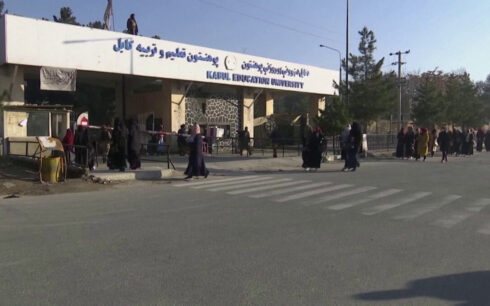On World Day Against Child Labor, the United Nations Office for the Coordination of Humanitarian Affairs (OCHA) reported that 19% of children in Afghanistan are engaged in child labor. This statistic raises significant concerns for their well-being and future. “We must work together to ensure every child has the opportunity to learn and grow in a safe environment,” OCHA said.
Exact figures about the number of children engaged in labor in Afghanistan have not been provided by the UN but according to Save the Children, there were one million children engaged in labor in Afghanistan in 2022.
The UN highlighted that this year’s theme for World Day is “Let’s Act on Our Commitments: End Child Labour!” The day also marks the 25th anniversary of the Worst Forms of Child Labour Convention (Convention No. 182), adopted in 1999.
“This is an opportunity to remind all stakeholders to enhance their implementation of the two fundamental conventions on child labor—Convention No. 182 and Convention No. 138 on the Minimum Age for Admission to Employment or Work (1973),” the UN stated.
Despite significant progress in reducing child labor, recent years have seen global trends reverse, emphasizing the urgent need for coordinated efforts to eradicate child labor in all its forms. The international community committed to eliminating child labor by 2025 through Sustainable Development Goal Target 8.7.
This World Day Against Child Labour, June 12, 2024, the UN calls for:
- The effective implementation of ILO Convention No. 182 on the Worst Forms of Child Labour.
- Reinvigorated national, regional, and international efforts to end child labor through adopting national policies and addressing root causes, as outlined in the 2022 Durban Call to Action.
- Universal ratification and implementation of ILO Convention No. 138 on the Minimum Age, alongside the universal ratification of ILO Convention No. 182, to provide all children with legal protection against all forms of child labor.
Global child labor statistics
Since 2000, the world had made steady progress in reducing child labor. However, conflicts, crises, and the COVID-19 pandemic have driven millions more children into labor, with economic growth proving insufficient to alleviate the pressures on families. Today, 160 million children are engaged in child labor, nearly one in ten children worldwide.
Africa has the highest prevalence of child labor, with one in five children, totaling 72 million. Asia and the Pacific follow, with 7% of children, or 62 million, engaged in child labor. Together, Africa and Asia-Pacific account for nearly 90% of the world’s child labor. The Americas, Europe and Central Asia, and the Arab States account for the remainder, with 11 million, 6 million, and 1 million children in child labor, respectively.
In terms of incidence, 5% of children in the Americas, 4% in Europe and Central Asia, and 3% in the Arab States are in child labor. While the highest percentages are in low-income countries, middle-income countries have the largest number of child laborers. About 84 million children in middle-income countries, comprising 56% of all child laborers, and an additional 2 million in high-income countries, are engaged in child labor.





